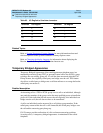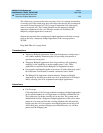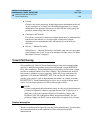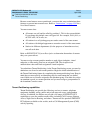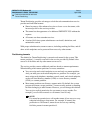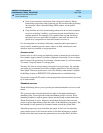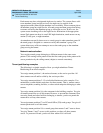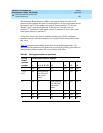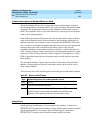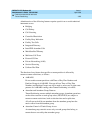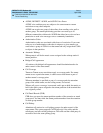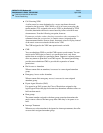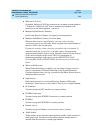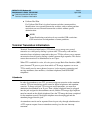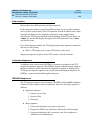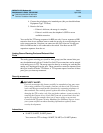
DEFINITY ECS Release 8.2
Administrator’s Guide
555-233-506
Issue 1
April 2000
Features and technical reference
1542Tenant Partitioning
20
Detailed description of Multiple Music-on-Hold
Tenant Partitioning allows you to assign each tenant a music source, unique to
each tenant partition, to be heard when a call is placed on hold. The tenant number
assigned to the destination extension usually determines which music source is
heard. This capability allows you to tailor the music or messages for the business
needs of each tenant partition.
If the COR of the extension that places the call on hold permits music-on-hold, a
caller on hold hears the music source assigned to the partition at which the call
initially terminates. For example, if calls coming into the DEFINITY ECS route
first to an I
NTUITY automated attendant that then routes the call to the appropriate
tenant partition, the caller on hold hears the music source of the I
NTUITY
automated attendant, not the tenant partition to which it is routed. Likewise, if a
caller in tenant partition 2 makes an out-going call using tenant partition 1’s trunk
groups, the caller will hear the music source assigned to tenant partition 1. If the
COR of the called extension does not permit music on hold, however, the caller
hears nothing.
The maximum number of music sources allowed is the same as the maximum
number of tenant partitions allowed; each music source can be used by one or
more tenant partitions.
You can assign one of the following music-on-hold types to each tenant partition.
Interactions
Tenant-partition identification is not passed between switches. A network of
DEFINITY ECS systems does not enforce Tenant Partitioning restrictions without
special administration. For example, Tenant Partitioning on a network of
DEFINITY ECS systems does not enforce tenant-specific tie trunks.
Table 95. Music-on-Hold Types
Type System Response for a caller placed on hold
none silence
tone system-wide administered tone
music the music associated with the administered port. The number of
possible music sources equals the number of possible tenant
partitions. Each partition can have its own music source.



